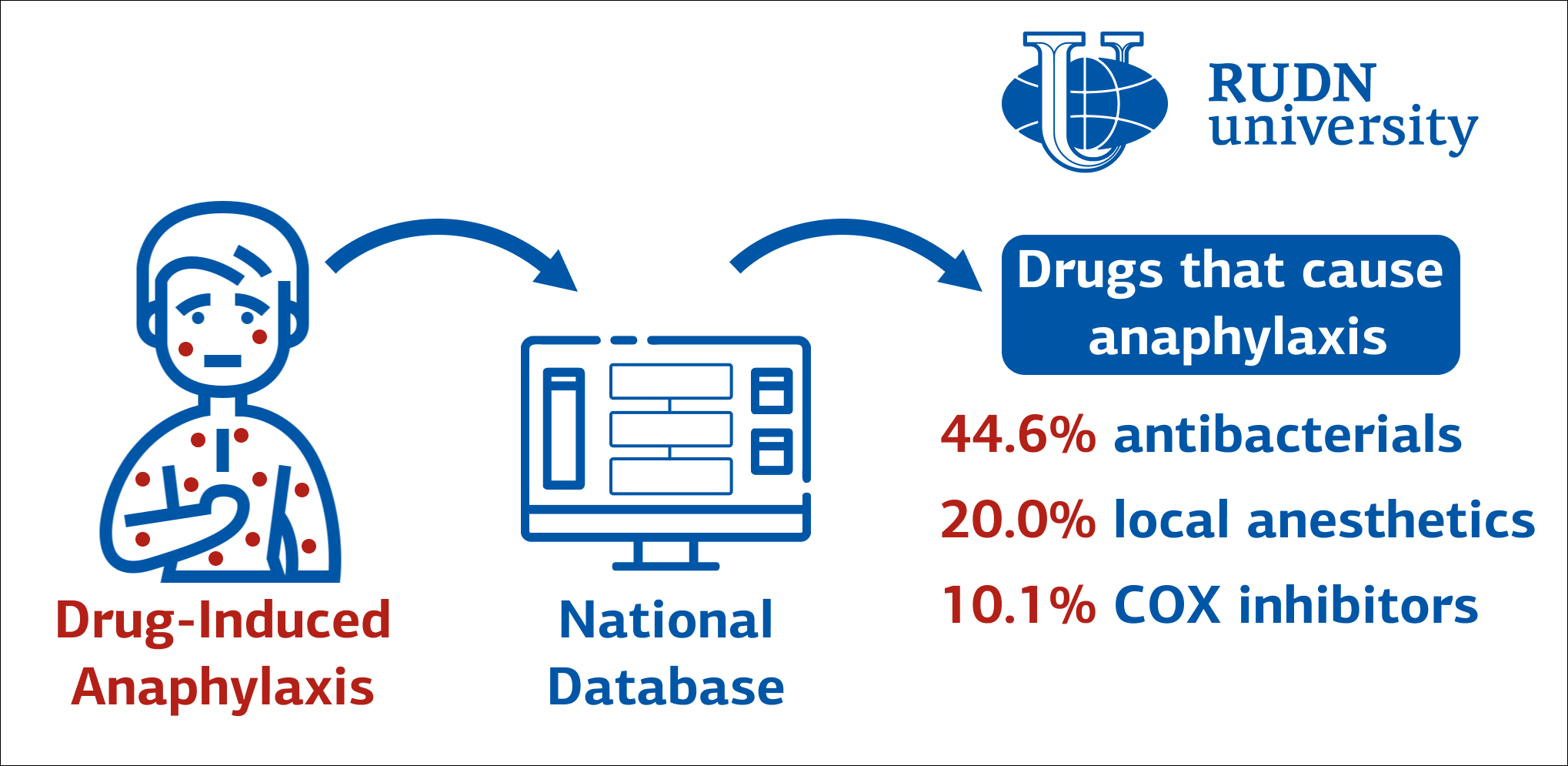RUDN University doctors collected statistics on cases of extreme drug allergies – anaphylaxis. The authors presented the results in different age groups and named the most dangerous drugs for an allergic reaction. The results were published in Pharmaceuticals.
Anaphylaxis is a variant of an extremely severe allergic reaction. Contact with the allergen can lead to a sharp drop in blood pressure and a lack of oxygen, which causes the body’s systems to shut down and death can occur. Anaphylaxis occurs spontaneously, and its severity is often impossible to predict. Therefore, it is important to follow the statistics of real cases of anaphylaxis. RUDN University doctors analyzed almost 30 thousand cases of drug allergies over 4 years and presented them in the form of statistical data.
“National health system databases are an important source of information on the epidemiology of adverse drug reactions, including drug allergies and anaphylaxis. Analysis of such databases can expand the knowledge of medical workers about the problem of drug-induced anaphylaxis,” Olga Butranova, PhD, Associate Professor of the Department of General and Clinical Pharmacology of the RUDN University said.
Clinicians used a retrospective descriptive analysis. To do this, the authors took reports of drug-induced anaphylaxis registered in the Russian National Pharmacovigilance database. A total of 27,727 records were analyzed. RUDN University doctors used data from April 2, 2019, to June 21, 2023. The authors calculated the proportion of anaphylaxis among all allergic reactions caused by drugs. Separately, they studied indicators among children, the elderly, and fatalities, and paid attention to demographic indicators.
Anaphylaxis accounted for 8.3% of all drug-induced allergic reactions in adults. The average age of the patients was 48.2 years. For children, the proportion of anaphylaxis was 3.9%, among the elderly – 2%. In 53.2% of cases, anaphylactic reactions were observed in women. The main groups of drugs that caused anaphylaxis were antibacterial drugs (44.6%), local anesthetics (20%), and cyclooxygenase inhibitors (10%). The latter are represented, for example, by drugs such as aspirin and ibuprofen. Fatal anaphylaxis occurred in 9.5% of all reported anaphylaxis cases. In 40% of them, the reaction was caused by antibacterial agents.
“Anaphylaxis accounts for a fairly large proportion of all allergic reactions caused by drugs. The main drugs involved were antibacterial agents, local anesthetics, cyclooxygenase inhibitors, cardiovascular drugs, and drugs acting on the central nervous system,” Olga Butranova, PhD, Associate Professor of the Department of General and Clinical Pharmacology of the RUDN University said.
